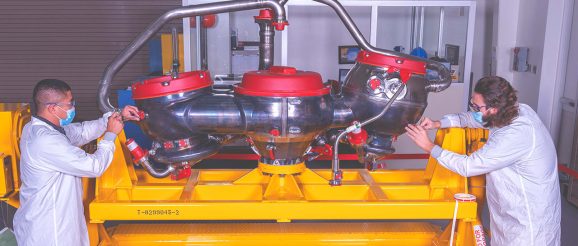How NASA helps innovation thrive

Hoffman ought to know. He spent more than three decades with NASA, becoming the agency’s first chief knowledge officer, as well as the founder of the NASA Academy of Program/Project and Engineering Leadership, or APPEL. Today, he is CEO of consulting firm Knowledge Strategies, LLC and a senior lecturer at Columbia University. Here, he shares four aspects of NASA’s culture that help people—and innovation—flourish:
Hoffman recounts a quote he says is often repeated at NASA: “You come to NASA for the mission, but you stay for the people.” It’s a place where employees can “grow, learn, and feel appreciated,” he says. “That may sound ‘normal,’ but in so many places, you don’t get that.” The agency invests in developing team members and, in his experience, it’s not unusual for very senior staffers to interact with junior-level team members both formally and informally, to help encourage interaction to break down silos.
NASA bucks traditional project management trends and workplace practices by adhering to “radical transparency,” he says. “[It’s the] notion that, if we’re working on the same team together, we’re going to share everything unless there’s a legal requirement not to.” This is where the book can be somewhat controversial, he says. “But the notion that you have the one group that sets the requirements, and then they give them to the designer, the designer meets that—that’s old-school,” he adds. Teams work better when as much information is shared as possible, and members collaborate from there.
By being honest about what you don’t know—those areas of ignorance—and turning to people who have more knowledge than you in an area leads to better outcomes, Hoffman says. He says that this principle was a reason that NASA learned the importance of diversity, in his opinion. “I don’t think it was because they were necessarily in a ‘nicer’ place,” he says. “I think it was because they believe the notion that different eyes, different perspectives, gives you a way to understand and to lessen the potential dangers there.” Hoffman says NASA encourages having a strategy for getting the information you need, whether it’s looking internally or externally for experts, and ensuring that information is sought from a broad range of sources.
Prioritizing people, giving them a safe place to learn, and supporting leaders who understand the mission and culture of their organization help make NASA a place where big ideas and accomplishments happen, Hoffman says. Organizations that model these aspects in their own cultures are on their way to having the right stuff.
